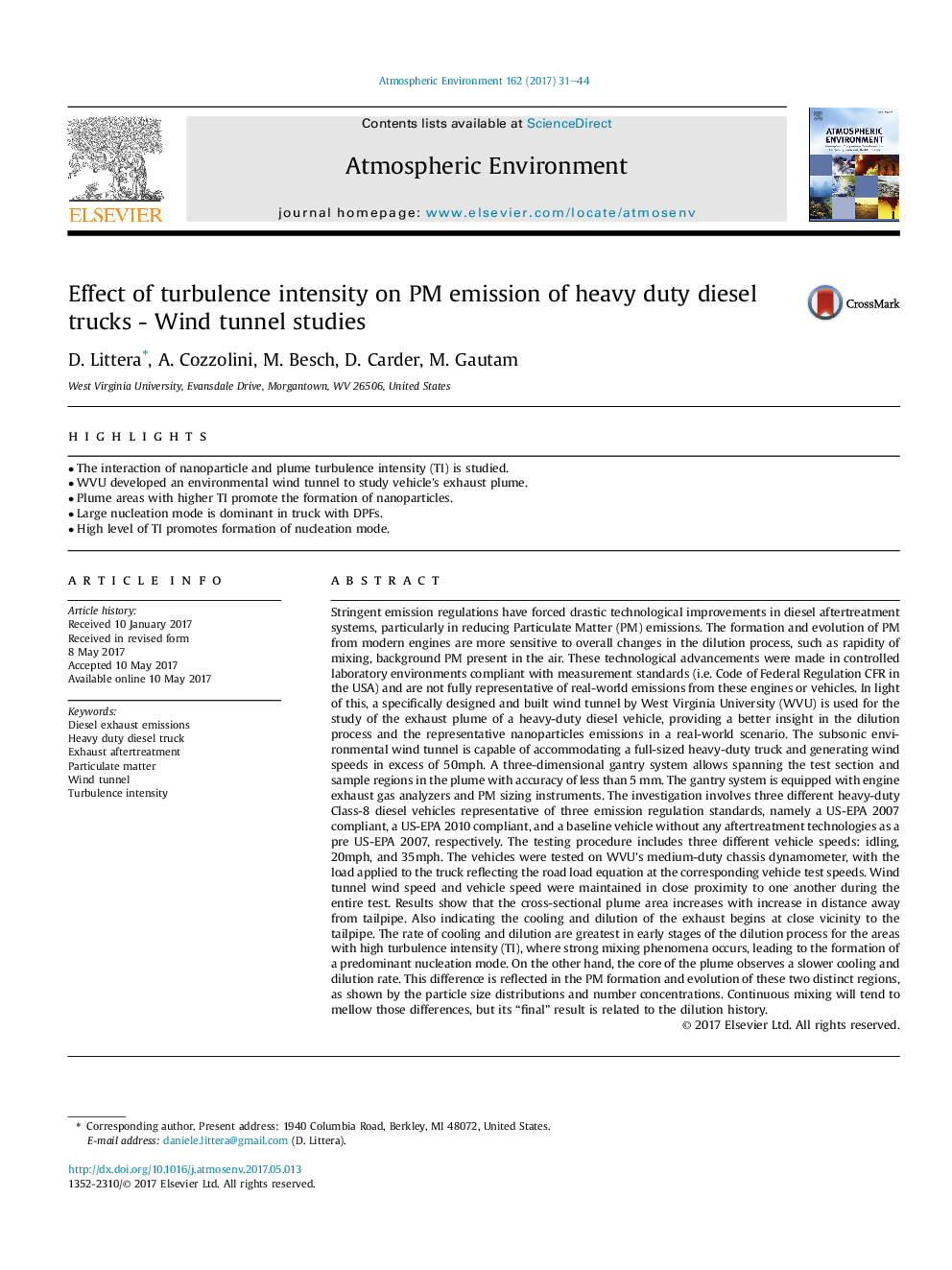| کد مقاله | کد نشریه | سال انتشار | مقاله انگلیسی | نسخه تمام متن |
|---|---|---|---|---|
| 5753033 | 1620312 | 2017 | 14 صفحه PDF | دانلود رایگان |
عنوان انگلیسی مقاله ISI
Effect of turbulence intensity on PM emission of heavy duty diesel trucks - Wind tunnel studies
دانلود مقاله + سفارش ترجمه
دانلود مقاله ISI انگلیسی
رایگان برای ایرانیان
کلمات کلیدی
موضوعات مرتبط
مهندسی و علوم پایه
علوم زمین و سیارات
علم هواشناسی
پیش نمایش صفحه اول مقاله

چکیده انگلیسی
Stringent emission regulations have forced drastic technological improvements in diesel aftertreatment systems, particularly in reducing Particulate Matter (PM) emissions. The formation and evolution of PM from modern engines are more sensitive to overall changes in the dilution process, such as rapidity of mixing, background PM present in the air. These technological advancements were made in controlled laboratory environments compliant with measurement standards (i.e. Code of Federal Regulation CFR in the USA) and are not fully representative of real-world emissions from these engines or vehicles. In light of this, a specifically designed and built wind tunnel by West Virginia University (WVU) is used for the study of the exhaust plume of a heavy-duty diesel vehicle, providing a better insight in the dilution process and the representative nanoparticles emissions in a real-world scenario. The subsonic environmental wind tunnel is capable of accommodating a full-sized heavy-duty truck and generating wind speeds in excess of 50mph. A three-dimensional gantry system allows spanning the test section and sample regions in the plume with accuracy of less than 5Â mm. The gantry system is equipped with engine exhaust gas analyzers and PM sizing instruments. The investigation involves three different heavy-duty Class-8 diesel vehicles representative of three emission regulation standards, namely a US-EPA 2007 compliant, a US-EPA 2010 compliant, and a baseline vehicle without any aftertreatment technologies as a pre US-EPA 2007, respectively. The testing procedure includes three different vehicle speeds: idling, 20mph, and 35mph. The vehicles were tested on WVU's medium-duty chassis dynamometer, with the load applied to the truck reflecting the road load equation at the corresponding vehicle test speeds. Wind tunnel wind speed and vehicle speed were maintained in close proximity to one another during the entire test. Results show that the cross-sectional plume area increases with increase in distance away from tailpipe. Also indicating the cooling and dilution of the exhaust begins at close vicinity to the tailpipe. The rate of cooling and dilution are greatest in early stages of the dilution process for the areas with high turbulence intensity (TI), where strong mixing phenomena occurs, leading to the formation of a predominant nucleation mode. On the other hand, the core of the plume observes a slower cooling and dilution rate. This difference is reflected in the PM formation and evolution of these two distinct regions, as shown by the particle size distributions and number concentrations. Continuous mixing will tend to mellow those differences, but its “final” result is related to the dilution history.
ناشر
Database: Elsevier - ScienceDirect (ساینس دایرکت)
Journal: Atmospheric Environment - Volume 162, August 2017, Pages 31-44
Journal: Atmospheric Environment - Volume 162, August 2017, Pages 31-44
نویسندگان
D. Littera, A. Cozzolini, M. Besch, D. Carder, M. Gautam,